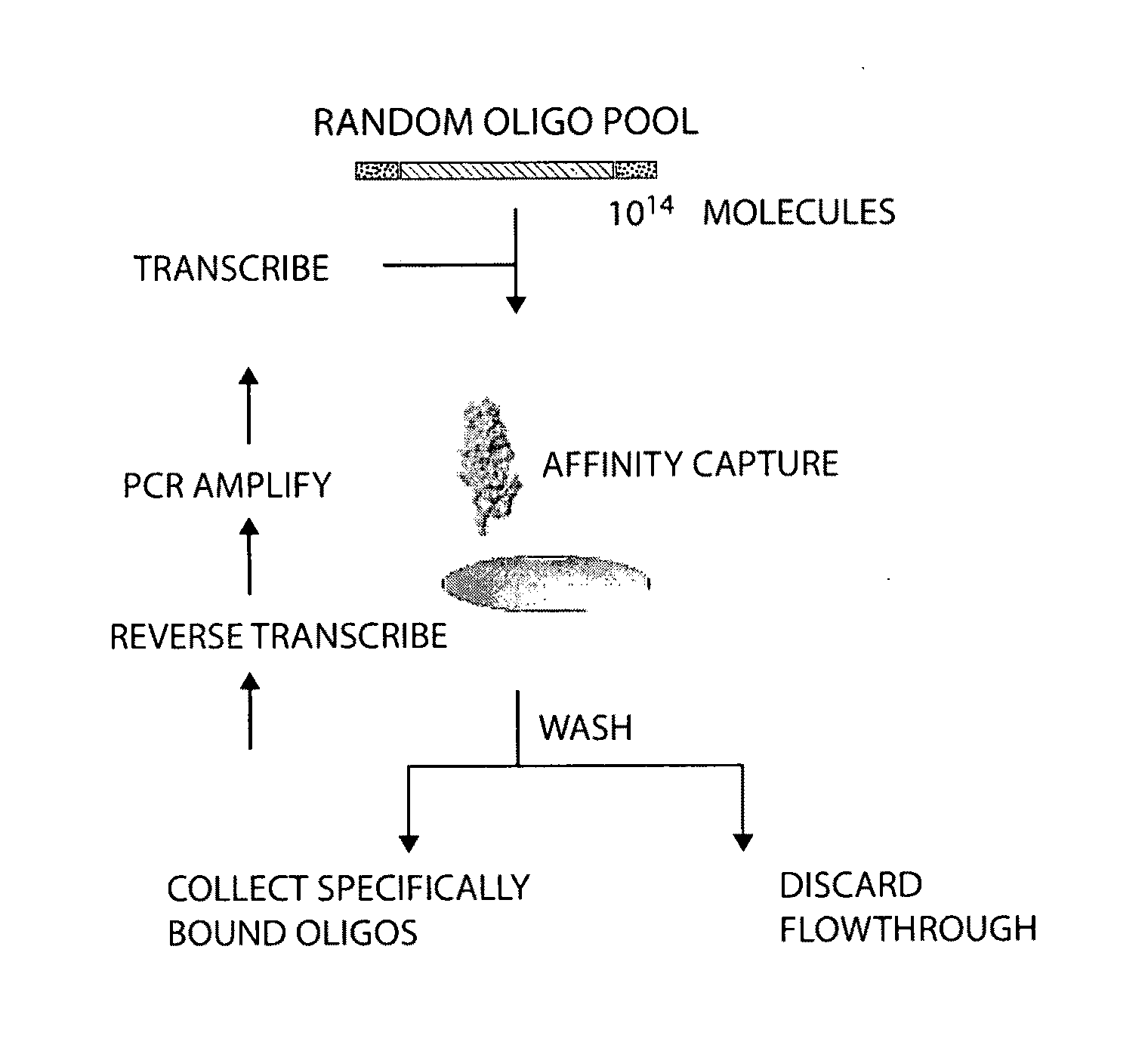Materials and methods for the generation of transcripts comprising modified nucleotides
- Summary
- Abstract
- Description
- Claims
- Application Information
AI Technical Summary
Benefits of technology
Problems solved by technology
Method used
Image
Examples
example 1
Polymerase Expression and Purification
[0181]Mutant T7 RNA polymerase, for use in the methods of the invention may be prepared as follows. T7 RNA polymerase (nucleic acid and amino acid sequence shown in FIGS. 3A and 3B respectively and described in Bull, J. J et al., J. Mol. Evol., 57 (3), 241-248 (2003) may be mutated to result in the LA mutant (Y639L / H784A), the LAR mutant (Y639L / H784A / K378R), the LLA mutant (P266L / Y639L / H784A) or the LLAR mutant P266L / Y639L / H784A / K378R). T7 RNA polymerase may be comprised in an expression vector (an example of a T7 RNA polymerase expression vector is described in U.S. Pat. No. 5,869,320 herein incorporated by reference in its entirety) or may be inserted into an expression vector following mutagenesis. The mutated T7 RNA polymerase may be engineered to optionally comprise a His-tag for ease during protein purification.
[0182]Complementary oligonucleotide sequences that contain the Leucine mutation for position 639 (agtcatgacgctggctCTGgggtccaaagagt...
example 2
Transcription Incorporating 100% 2′-O-Methyl Nucleotides
example 2a
2′-O-Methyl Transcription without 2′-OH GTP
[0186]An experiment was performed to test the sensitivity of Y639L / H784A / K378R mutant polymerase to the concentration of 2′-OH GTP by using a titration of 2′-OH GTP.
[0187]ARC2118 and ARC2119, two libraries which showed high transcript yields when used with the Y639L / H784A / K378R mutant T7 RNA polymerase, were used to test the sensitivity of transcription of the Y639L / H784A / K378R mutant T7 RNA polymerase to the concentration of 2′-OH GTP. The sequence of ARC2118 is given in Example 2C below and that of ARC2119 is given immediately below in the 5′ to 3′ direction.
ARC2119(SEQ ID NO 31)TAATACGACTCACTATAGGGGGTGATATTGACGTTCTCGNNNNNNNNNNNNNNNNNNNNNNNNNNNNNNGGATCGTTACGACTAGCATCGATG
[0188]Transcriptions were performed using a titration of 2′-OH GTP (0-160 uM) with 1× transcription buffer (HEPES 200 mM, DTT 40 mM, spermidine 2 mM, Triton X-100 0.01% w / v). ˜200 nM template, 2′-OMe ATP, CTP, UTP, and GTP 1 mM each, MgCl2 6.5 mM, MnCl2 2.0 mM, PEG-8000 w / ...
PUM
| Property | Measurement | Unit |
|---|---|---|
| Molar density | aaaaa | aaaaa |
| Molar density | aaaaa | aaaaa |
| Molar density | aaaaa | aaaaa |
Abstract
Description
Claims
Application Information
 Login to View More
Login to View More - R&D
- Intellectual Property
- Life Sciences
- Materials
- Tech Scout
- Unparalleled Data Quality
- Higher Quality Content
- 60% Fewer Hallucinations
Browse by: Latest US Patents, China's latest patents, Technical Efficacy Thesaurus, Application Domain, Technology Topic, Popular Technical Reports.
© 2025 PatSnap. All rights reserved.Legal|Privacy policy|Modern Slavery Act Transparency Statement|Sitemap|About US| Contact US: help@patsnap.com



